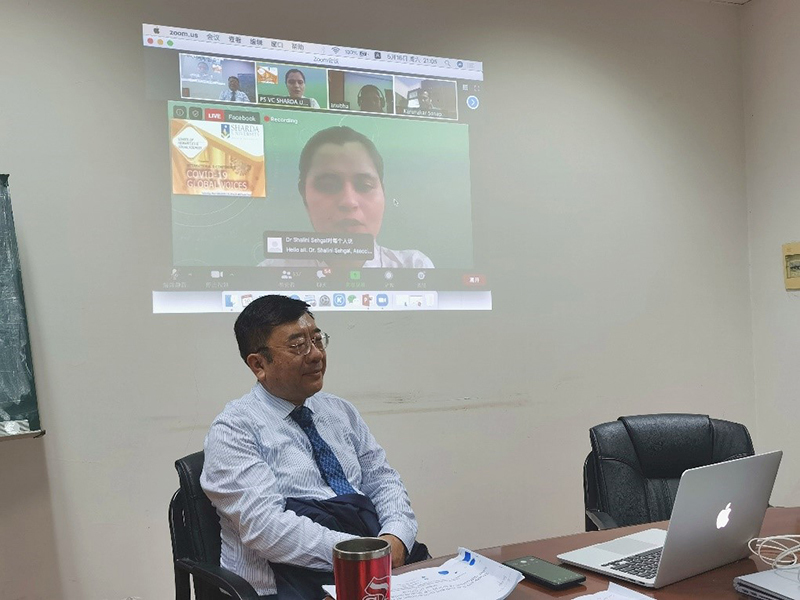At 9:00 on the evening of May 16, 2020, Dr. Hong Mi, Professor of department of social security and risk management of Zhejiang University, Executive Director of Institute for Population and Development Studies and Deputy Director of Center For Non-Traditional Security & Peaceful Development Studies, was invited to participate in the International E-conference on “COVID-19 GLOBAL VOICES” held by School of Humanities & Social Sciences, Sharda University, and gave a topic speech with the theme of “Study on Pattern Recognition of Transmission and Diffusion of COVID-19 Pneumonia in Non-Hubei Area of China”.

A total of 8 experts and scholars from China, the United States, the United Kingdom, France, Germany and India gave speeches, and nearly 200 experts and scholars from all over the country participated in the online conference. The webinar is divided into two parts. The first part discusses the economic and political impact of COVID-19. The second part discusses the impact of COVID-19 on health, media and diplomacy. As a member of the Royal Geographical Society, Jon Geldart discussed the impact of COVID-19 on the British economy as well as the idea of promoting British commodity trade from a business perspective. University of Central Florida (UCF) professor Lloyd Fernald analyzed the overall impact of COVID-19 epidemic on the GDP, unemployment rate and other macroeconomic factors in US. He also analyzed the challenges and solutions faced by small enterprises during and after the COVID-19. Francois de Chevalerie, CEO of ITgium, analyzed the developing status of COVID-19 in France and put forward some proposals to restore the EU economy from the perspective of entrepreneurs. German scholar Isabelle roske suggested that COVID-19 may be the second largest crisis faced by Germany since the refugee crisis.
Professor Hong Mi discussed the relationship between population mobility and population agglomeration with the development of COVID-19 in China. The study used the data on the number of confirmed cases of COVID-19 in non-Hubei areas in China before March 6th, the outflow population from Wuhan before lockdown, and the total population in non-Hubei areas to model the inter-provincial transmission and intra-provincial diffusion of COVID-19 in non-Hubei areas. The study pointed out that 73% of the confirmed cases in non-Hubei areas came from the transmission of imported cases from Wuhan, which was the exogenous hazard; 27% of the confirmed cases came from the epidemic diffusion of imported cases within the destination province, due to the endogenous hazard. The pattern identified by the data before March 6th was used to predict the cumulative cases of COVID-19 in non-Hubei areas from March 7 to May 12. The difference between the predicted value and the officially announced actual value does not exceed 3%.

Professor Hong Mi’s topic speech was approved by the participating experts and scholars. The host of the conference believed that this research is of great significance to the recognition of the development pattern of the COVID-19 epidemic worldwide.
(Press release from Yichao Li)


